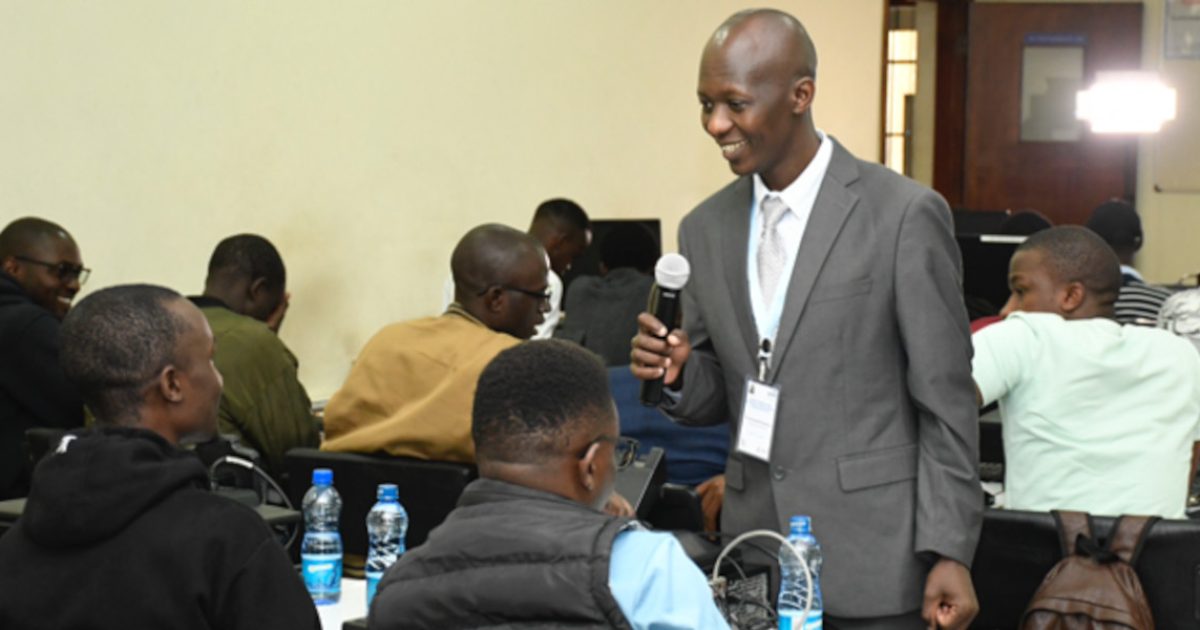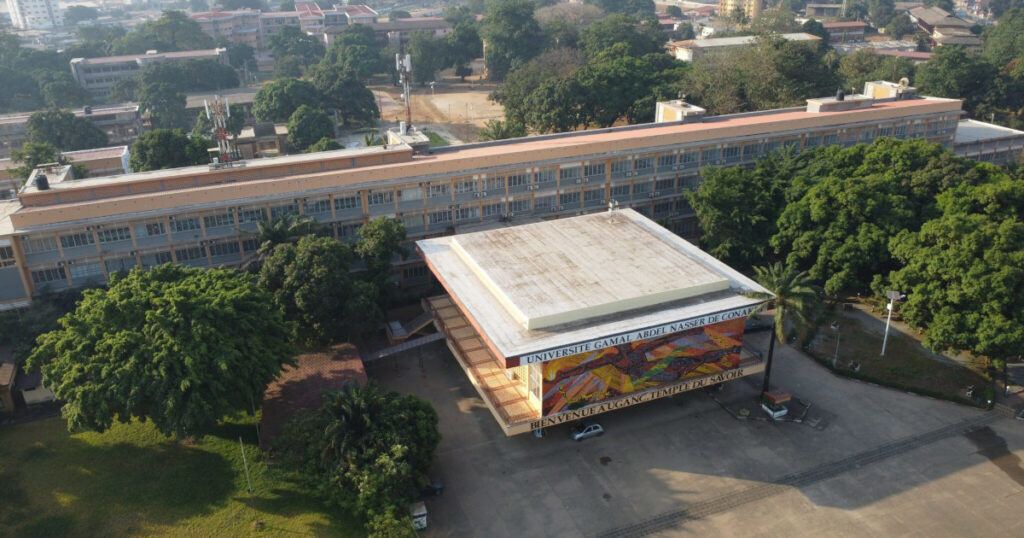The first edition of the School of Computational Techniques for Physics students in Kenya has been held in Nairobi in June 2024
In June 2024, the University of Nairobi (UoN) hosted the first edition of the School of Computational Techniques for Physics students in Kenya (SCoTeP-K). For five days, forty students from all over the country participated in a very intense programme, in the serene setting of the Chiromo campus in the heart of the Kenyan capital. With a female vs male student balance of 40:60, an equivalent number of undergraduate and postgraduate students, 17 universities were represented making the SCoTeP-K 2024 cohort a nicely diverse one.
Organized by UoN’s Department of Physics in collaboration with Karatina University, South Eastern University of Kenya (SEKU), the French National Centre for Scientific Research (CNRS) and University Paris-Saclay, the school also benefited from the infrastructure and skilled staff from the Department of Computing and Informatics (UoN). The aim was for students to literally have their hands on the keyboard throughout the training. Which they did.
Teaching computational techniques
While programming has invaded all areas of science and technology, it turns out that computational techniques are rarely taught in BSc physics programmes in Kenya. The aim of SCoTeP-K was therefore to fill this gap, or at least to provide the forty students who had been selected with the foundations on which they could then continue their training on their own. As organizers, we had a vision that this school will help to bring about a change in Kenyan universities and see such training being developed over the next few years.
The programme was particularly intense. The students began by being introduced to the Linux operating system, which is widely used in the scientific community. They had the opportunity to learn the basics of the Python programming language, which they applied immediately in the class on statistical data analysis. They were also introduced to machine learning techniques and were even able to try the Git versioning management system.
A friendly and studious atmosphere
The training was provided by a small team of friendly, skillful, and dedicated teachers who gave their all to pass on their knowledge over these few days. The success of SCoTeP-K owes a great deal to them: Dr. Christina Agapopoulou (CNRS and University of Paris-Saclay), Dr. Lorenzo Capriotti (University of Ferrara), Dr Livingstone Ochilo (Jaramogi Oginga Odinga University of Science and Technology) and two teaching assistants, Kiplabat Tarus and Charles Ndegwa, PhD students at the University of Nairobi. While one of them was in charge of leading the training on a given subject, all the others did not hesitate to go through the rows to help the students with the practical exercises.
The programme took place in an atmosphere that was both friendly and studious, and the students quickly felt at ease asking questions and seeking help from both the teaching staff and their fellow students. As organizers, we really appreciated their commitment, seriousness and even punctuality! Extended lunch and tea breaks, during which the teaching and organising staff mingled with the students, gave everyone a chance to get to know each other and discuss their studies, their research projects and their future plans.
Presentation of career opportunities
Actually, a full session was dedicated to “Career and Opportunities”. It provided the students with a range of options, both in Kenya and abroad. Among the special guests at this session was John Onesmus Mutua, postgraduate students at SEKU, who shared his experience as a student of CERN’s summer student programme in 2023. Kate Shaw, from the International Centre for Theoretical Physics (ICTP) in Trieste, Italy, presented online the opportunities at ICTP. The African Institutes of Mathematical Sciences (AIMS) were also advertised thanks to the online talk by Claire David, academic director of the AI For Science Master’s Stream at AIMS South-Africa.
The students also had fun writing a short motivation letter for a fictitious school. Some of them shared their letters with the whole group, which gave us an opportunity to discuss the classic mistakes and the limits – and even dangers – of using artificial intelligence to write a personal letter!
Some physics, after all
Although the school was dedicated to computational techniques, we could not resist, as physicists, to talk about physics! The application examples of the lectures on statistical analysis and machine learning were extracted from the actual research of the Laser Physics and Spectroscopy group at UoN and from the LHCb experiment at CERN, Geneva, Switzerland. One of the highlights of the school was indeed a virtual visit of the LHCb experiment by its Run Coordinator, Elena Dall’Occo.
The school is over but its impact lives on. Students continue exchanging tips and information on the SCoTeP-K chat group. Research collaborations between the University of Nairobi and the University of Paris-Saclay have been initiated. We are hoping to see the benefits of the school to the students in the coming years, both in terms of further studies and career development.
The organizers express their heartfelt gratitude to the University of Nairobi for hosting the event and to the sponsors, the Embassy of France in Kenya and Somalia, the Kenya Education Network (Kenet) and the Physics Without Frontiers programme of ICTP, for their invaluable support.
Ian Kaniu, University of Nairobi, Kenya, Lydia Roos, LPNHE, CNRS, France, Jeremiah Kebwaro, Karatina University, Kenya, James Mugambi, South Eastern Kenya University, Kenya, Dimitris Varouchas, IJClab, CNRS and Université Paris-Saclay, France
Contributing Editor: Robinson Musembi
This article has been published by the African Physics Newsletter in November 2024. It is reproduced with the authorization of the American Physical Society.




